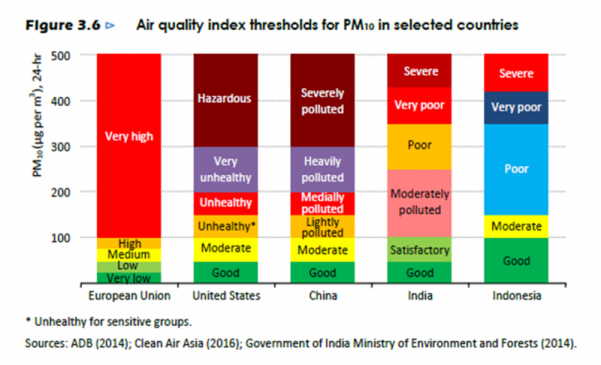 Climate change has important implications for the management and conservation of natural resources. The government agencies responsible for managing these resources have generally recognized that climate change adaptation should be mainstreamed into their planning processes, and yet this topic is still treated as an afterthought in many planning documents. One problem is a lack of guidance: most agencies have not adopted detailed guidelines on how to account for climate change in resource assessments, management plans, and environmental review documents.
Climate change has important implications for the management and conservation of natural resources. The government agencies responsible for managing these resources have generally recognized that climate change adaptation should be mainstreamed into their planning processes, and yet this topic is still treated as an afterthought in many planning documents. One problem is a lack of guidance: most agencies have not adopted detailed guidelines on how to account for climate change in resource assessments, management plans, and environmental review documents.
To help fill this gap, the Sabin Center has published a model protocol and accompanying report: Considering the Effects of Climate Change on Natural Resources in Environmental Review and Planning Documents. This project complements a similar report and protocol that we published last year on assessing effects of climate change on built infrastructure in environmental reviews. Information about both projects and supporting materials are available on our new website.
The natural resources protocol was developed in consultation with federal agencies, environmental consulting firms, non-governmental organizations, and academic institutions. It identifies critical decision points where managers should account for climate change impacts (e.g., sustainable yield and multiple use determinations) and contains recommendations about how to go about conducting climate impact analyses in the context of different types of planning documents. A standalone version of the protocol is available here.
The accompanying report presents some of the key findings from the research underpinning the model protocol project. It begins with a discussion of how climate change may affect natural resources in the United States. This discussion is followed by an analysis of federal planning and environmental review laws, and the extent to which those laws can be interpreted as either requiring or authorizing agencies to consider the effects of climate change in planning documents. Briefly stated, the key findings from the legal analysis are:
- Management directives related to the sustainable use and conservation of natural resources cannot be fulfilled without consideration of how climate change may affect those resources.
- The National Environmental Policy Act (NEPA) also requires consideration of how climate change may affect future conditions in the planning area.
- Most of the statutes governing the management of natural resources provide ample leeway to experiment with different responses to climate change.
This analysis of planning mandates is followed by a review of federal agency efforts to ensure that projections of climate change impacts are accounted for in natural resource planning processes. One key finding is that the issuance of specific directives and/or guidance describing how natural resource managers should account for climate change impacts and corresponding management implications is fundamentally important in this context: without such guidance, there is no guarantee that climate change impacts will be discussed at all, let alone in sufficient detail to inform the decision-making process.
Finally, the report discusses how natural resource managers can effectively integrate information about climate change impacts and adaptation measures into planning documents. It presents a variety of recommendations aimed at satisfying legal requirements and promoting better informed decision-making:
- Managers should focus on climate change-related impacts that have the greatest implications for management decisions.
- The climate change impact analysis should be used to evaluate the efficacy and environmental outcomes of different management approaches.
- Managers should account for the impacts of climate change when determining sustainable yields, resource uses, and resource allocations.
- Managers should account for the impacts of climate change in Endangered Species Act listing decisions, critical habitat designations, and recovery and habitat conservation plans.
- Uncertainty is not a basis for inaction: adaptation measures can be implemented in the near-term to improve the resilience and adaptive capacity of landscapes and ecosystems.
- Greater specificity is needed to guide the implementation of monitoring and adaptive management programs.
The model protocol, included as an Appendix to the report, incorporates all of these recommendations into a clear set of directives for natural resource managers. Many of these directives are linked to federal planning mandates, but the protocol could nonetheless be adapted for use by state and local officials and private managers. Notably, the protocol does not discuss how agencies or other entities should account for the effects of climate change on buildings and infrastructure. As noted above, the Sabin Center has published a separate protocol for conducting that type of analysis in the context of environmental review documents. That protocol was also developed through extensive consultation with government agencies and other stakeholders.



